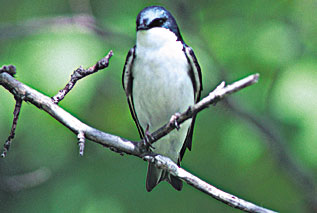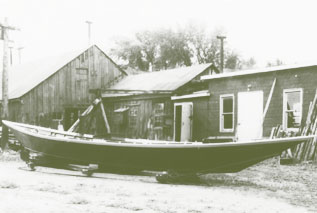 |
Canada’s Capistrano
“A symbol of summer and talisman of good fortune.”
Collingwood Ingram
From the early 1970s and for a 20-year period thereafter,
Canada’s largest concentration of swallows
and martins made Pembroke their home. Each summer
a flock of up to 100 000 birds would roost in a
small stand of willows on a .2 hectare plot of land
near the Pembroke Marina. Located at the confluence
of the Muskrat and Ottawa Rivers this landbase provided
the birds with perches, tree cover and food. In
turn the birds provided displays of aerobatic wonder.
Displaying a natural phenomenon, at sunset each
day they would return to the roost in waves of 5000
per minute, performing aerial acrobatics before
settling in for the night.
The disappearance of the swallows in the early 1990s
was due to a combination of factors. Larger numbers
of merlins – their natural predator –
moved into the area, and building development adjacent
to the swallow roost decreased availability of food
and cover. As well, the natural progression for
a roost is to expand over a period of time and then
disperse to new areas in smaller flocks. It was
a rare natural phenomenon that Pembroke was proud
to host even for a short period of time. |
| |
|
|
 |
Workhorse of the Rivers
Designed and built by three generations of the local
Cockburn family, the pointer boat was instrumental
in the settlement of Pembroke and the development
of Canada. It was the workhorse of Canadian rivers
for over a century. Locally the pointers were contracted
by lumber companies to clear or sweep grounded logs
from shallow rapids, shoals and beaches along the
Ottawa River.
The Cockburn pointer, painted a trademark brick
red colour, had two high pointed ends from which
it derived its name. Each boat was powered by six
to eight men rowing in unison using 3-metre long
oars. Eventually the Cockburn family built a dozen
different types of pointers, the largest being 12
metres long and weighing one tonne. Each was stable,
tough, graceful, easy to handle, and – because
of its symetrical design – could reverse direction
without being turned around. Legend has it that
because of its ability to navigate in only 2 cm
of water the Cockburn pointer boat could ‘float
on heavy dew’. |
| |
|
